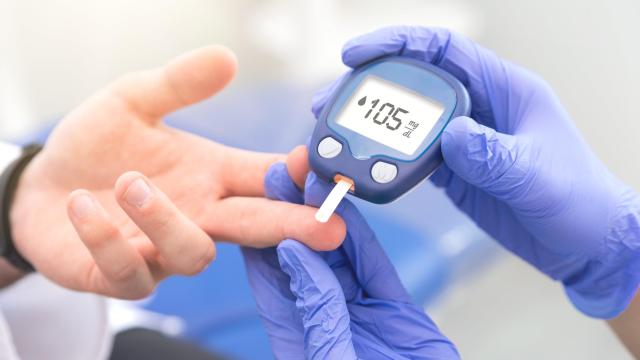Diabetes is a condition where people have high blood sugar and are at risk for all kinds of serious complications as a result. But if you’ve ever had trouble remembering which is type 1 and which is type 2, let’s explain the difference.
Both relate to how your body uses insulin
Whenever you eat carbs or sugar, you end up with glucose in your bloodstream. That’s a good thing; the blood carries it to the various cells of your body, which use glucose as fuel.
Your body needs to regulate when and how glucose gets into different types of cells, so think of each cell as having a lock on it. Insulin, a hormone produced by the pancreas, is the key to that lock. After a meal, insulin becomes available to unlock those cells, and glucose can enter.
There’s more to glucose transport and blood sugar than just this scenario, but if you think about insulin as a key and cells having locks, the difference between the two types of diabetes is easier to remember: In type 1, you don’t have enough keys, and in type 2, you have too many locks. In both cases, you end up with too much glucose in the bloodstream, because it can’t get into the cells.
What is type 1 diabetes?
Type 1 diabetes is what used to be called “juvenile” diabetes. It typically starts showing symptoms in childhood or when a person is a teenager, but in some cases it occurs in adults. (Children can also get type 2 diabetes, which is another reason for the switch to talking about the two “types” instead of thinking of them as juvenile and adult-onset.) About 5-10% of people who have diabetes have type 1.
Type 1 diabetes occurs when the beta cells of the pancreas don’t produce enough insulin. This happens because the body attacks its own beta cells, meaning it’s an autoimmune disease.
“The young child who is urinating frequently, drinking large quantities, losing weight, and becoming more and more tired and ill is the classic picture of a child with new-onset type 1 diabetes,” the American Diabetes Association says. Symptoms often start suddenly and worsen quickly, so if this sounds familiar, seek medical care right away. Treatment for type 1 diabetes requires insulin.
What is type 2 diabetes?
In type 2 diabetes, insulin may still be produced, but the cells in various parts of the body aren’t sensitive enough to it. This is called insulin resistance. Eventually, the pancreas may stop producing enough insulin, so you have a lack of insulin and a lack of sensitivity to it.
The symptoms of type 2 diabetes are similar to many of those in type 1: increased thirst and urination, hunger, fatigue, blurry vision, and sores that don’t heal properly.
You’re more at risk for type 2 diabetes if you are overweight or don’t exercise much (exercise can improve our cells’ insulin sensitivity, which is one of the reasons exercise is so important for health.) Older people, people with a family history of diabetes, and people who had gestational diabetes while pregnant are also at risk of developing the condition. The Centres for Disease Control and Prevention and the American Diabetes Association have an online test here that you can take to find out if you are at risk of prediabetes. (If you think you have the symptoms of actual type 2 diabetes, please see your doctor.)
Type 2 diabetes can often be managed or prevented with exercise, weight loss, and healthy eating, but medications may also be necessary. In some cases, insulin may be required.

Leave a Reply
You must be logged in to post a comment.